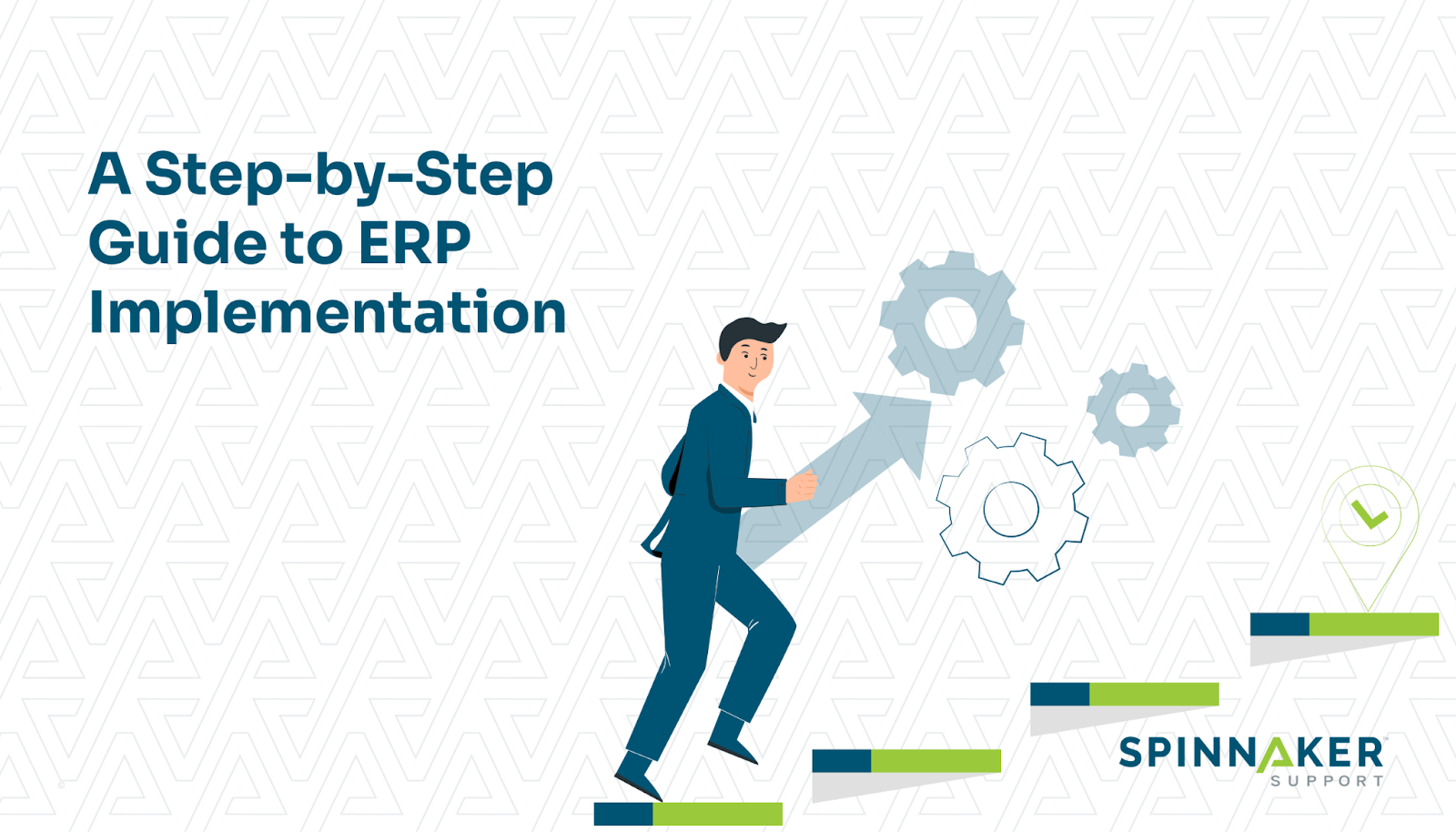
Enterprise Resource Planning (ERP) systems are essential tools for centralized management of your business operations, from sales to supply chain to HR. A well-executed ERP can deliver finely-honed business processes that help you stay ahead of the competition.
However, it can be daunting to implement an ERP system, especially if your existing operations are built around a heavily-customized IT infrastructure. Although ERP implementation can be complex, it is possible to implement it effectively if you have the right approach and the right personnel.
So, what are the best practices for a smooth ERP rollout? In this article, we’ll walk you through the ERP implementation process and provide key metrics to measure your project against and make sure you’re steering toward success.
What is ERP implementation?
ERP implementation is the process of configuring and rolling out an ERP system across an organization. This is generally a monthslong endeavor that requires careful planning and expert execution. Implementation may be done starting with a clean slate via greenfield deployment or by building on top of existing systems with a brownfield approach.
Motivations for implementing a new ERP can vary: perhaps you’ve decided to replace a legacy system that is too rigid meet today’s business needs, or you want a complete overhaul to a new system, or you require new features and functionalities to keep up with the competition.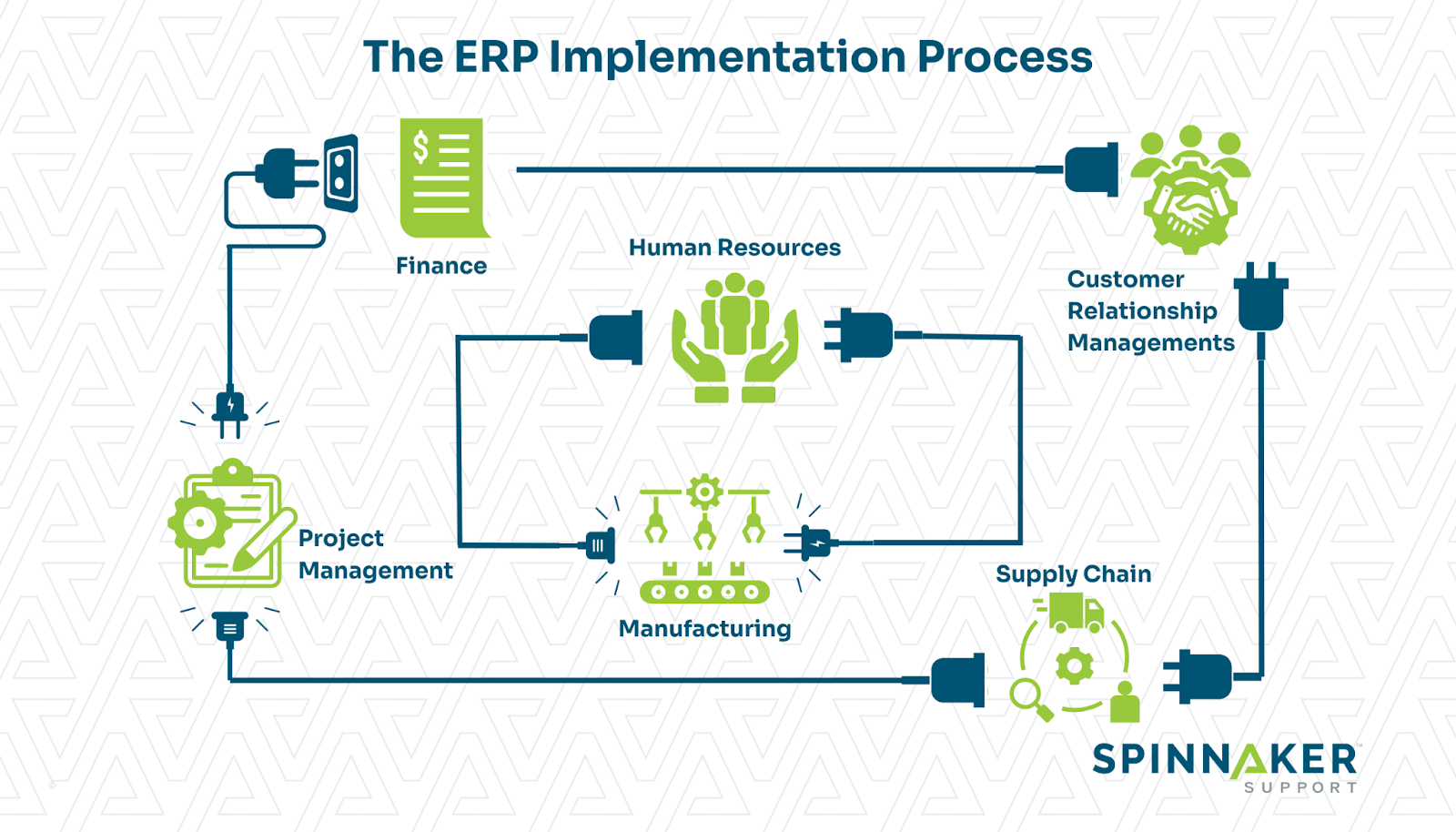
Advantages you might reap from implementing a new ERP system can include:
- Increase operational efficiency and agility: By integrating all the processes required to run a business into a single system, you can achieve better process alignment, increased user adoption, and improved data quality. Uniting previously-siloed information and workflows allows you to discover new insights and efficiencies.
- Adjust the pricing of your software suite: Companies paying excessive fees for their on-premises solutions often switch to a new ERP system to alter their cost structure. Despite the up-front cost and effort involved in migration, shifting to cloud-based software can help reduce your total cost of ownership in the long run.
- Lower tech obsolescence risk: Switching from legacy systems to a current ERP will allow you to use newer technologies. For instance, the SAP S/4HANA cloud has features like AI and machine learning that aren’t available in earlier on-premises SAP versions.
- Promote growth and innovation: Adapting to a new ERP system’s technological advances will help you improve on current business processes and better direct your internal operations. Using better management processes frees up valuable time for other business-critical initiatives.
These advantages are what makes ERP implementation worth it, despite the onerous workload it requires. Companies that have developed business processes to work within the constraints of their current systems may find the prospect of implementing an ERP system particularly daunting.
But you can improve the odds of a smooth ERP rollout by breaking the process into manageable steps with well-defined objectives.
ERP implementation: A step-by-step overview
Following these six key implementation strategies can increase the likelihood of a successful ERP rollout. Let’s take a look.
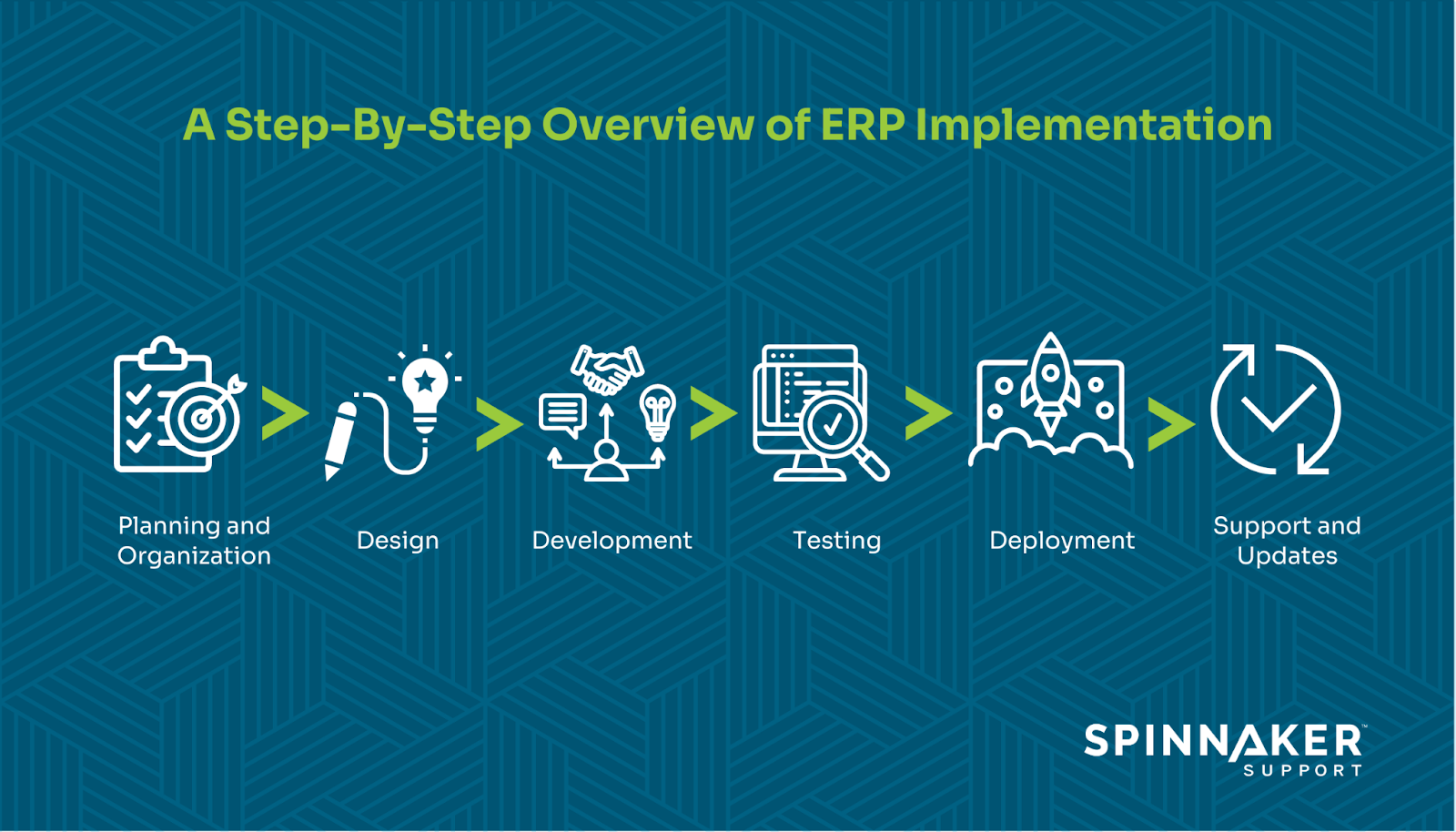
- Planning and organization During this phase, you’ll research, select a system, assemble your team, and define your system’s needs. You should start by crafting a well-thought-out plan that details the project’s scope, including the objectives, timeline, budget, resources, and risks.Cost estimation and financial management are particularly important since the average ERP project budget per user is $9,000. Make sure to factor in additional costs that may arise, such as:
Upgrade costs
Project team’s overtime wage
Data storage and backup fees
Consulting, customization, and training fees
When selecting the project team, include a dedicated project manager and, if needed, a few business partners. Find an executive sponsor who’ll push for ERP implementation success by removing roadblocks and bringing in other senior executives.
The project team needs to analyze the current problems, such as the inefficiencies in the business processes and the business requirements for the ERP system. As the company defines its needs, you can purchase the ERP system that best suits your implementation plans.
The project team responsibilities will include creating a schedule and milestones, securing funding, selecting products, designing implementation strategies, and daily management of the project. Because ERP implementation is a massive but infrequent undertaking, most in-house teams will lack the requisite experience and expertise. You should plan on hiring, upskilling, and/or investing in guidance from an experienced third party support provider.
The top ERP implementation barriers are change resistance (82%), unrealistic expectations (65%), lack of sponsorship (72%), and poor project management (54%).
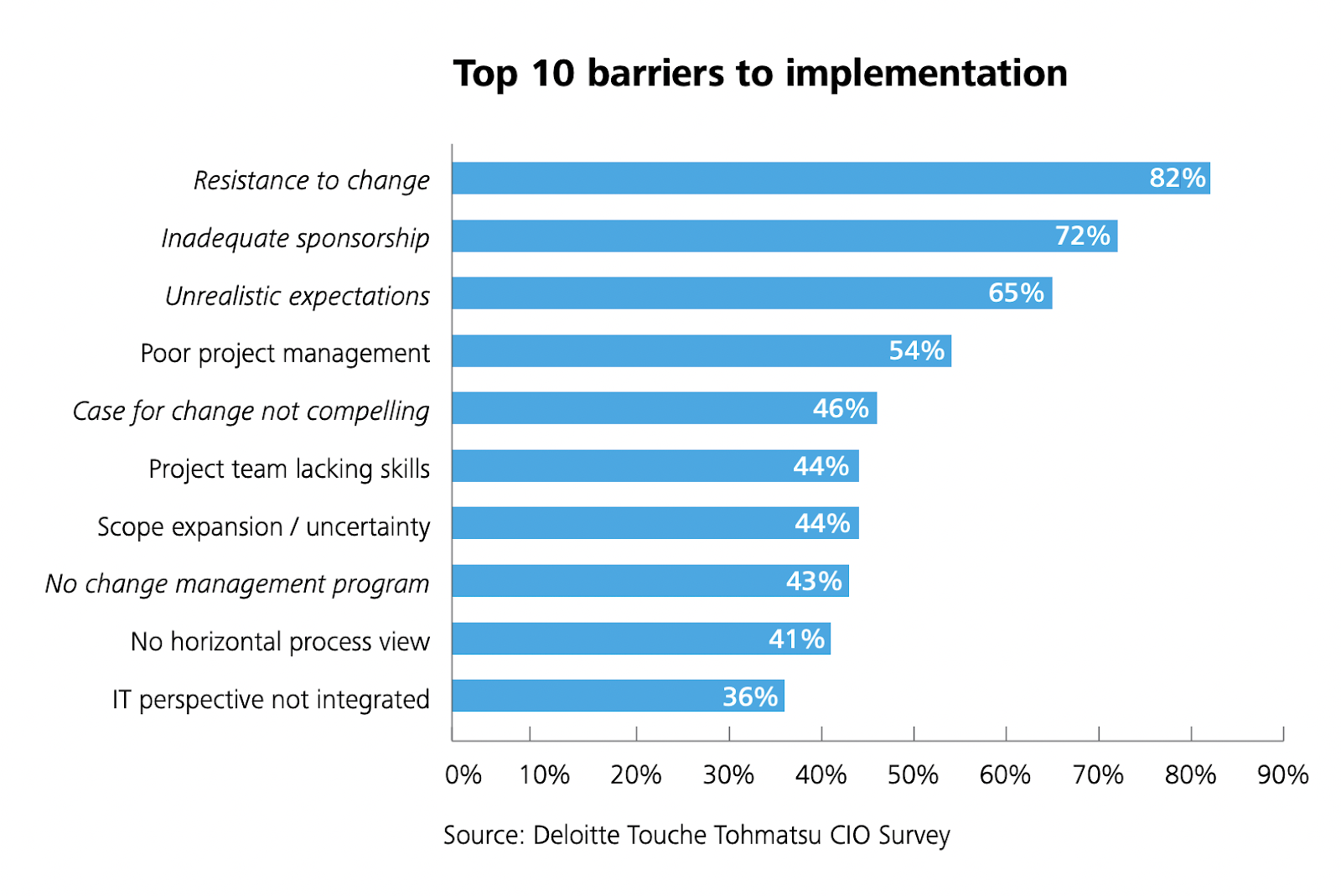
To counter these barriers, you should conduct proper change management planning. Disruption is inevitable with any change, but you can minimize it by clearly communicating any expected disruptions and planning for enough user training time.
- DesignYou will perform business process management at this stage by creating new, more effective workflows and processes. Start by analyzing your current processes, workflows, and data to determine the impact of the new ERP.You should conduct a gap analysis to determine process complexity and variations that may require ERP software customization.
With 93% of businesses tailoring ERP software to meet unique requirements, customization often creates implementation bottlenecks. In that case, you should analyze all process requirements that may call for ERP software customization before starting the development stage.
- DevelopmentYour implementation team will configure the ERP software and perform data migration at this stage. Often data migration usually entails data extraction, transformation, and loading from your legacy systems to the new ERP solution.Next, you should customize the ERP software to support the rethought business process models if necessary. Additionally, you should integrate with any other business tools that the ERP system won’t replace. Afterward, you should create training materials to help users learn the new system.
- TestingOnce the development phase is complete, the next step is to perform initial testing of the software’s fundamental features, followed by a comprehensive evaluation of the system’s capabilities.You should also validate the migrated data, making sure there are no omissions or corruption. When all the data is correctly in place, the ERP can serve as a single source of truth throughout the organization going forward.
Additionally, the testing stage should incorporate initial end-user training.
- DeploymentWhile some businesses prefer to roll out the entire ERP system simultaneously, others may deploy the system in stages. Depending on your project plans, you should start deploying the system for real-world use.Your implementation team will need to troubleshoot and address any issues. The project team should remain available to answer questions, explain the system, and fix user issues.
As you help users adapt to the system, you should know that adoption and the resulting productivity gains may take some time to materialize. You can also contact an implementation partner like Spinnaker Support to help you troubleshoot your ERP system.
- Support and updatesOnce your ERP system is up and running and there is ongoing training, you should focus on getting user input and tweaking the system accordingly. You may require additional development and configuration as new features are added to the system. Also, any new staff should undergo adequate training during the onboarding process.On-premises and cloud ERP systems require regular updates, support, and security patching. Software vendors’ support services can be expensive, but a third-party provider like Spinnaker Support is a great alternative if you’re looking for more affordable support options.
For example, Spinnaker Support customers who stay an average of 4–5 years save 62% on support costs. Additionally, you get assistance from experienced engineers committed to helping you maintain and secure your ERP system.
The key metrics for evaluating an ERP project’s success
Careful planning and execution are instrumental in successfully implementing ERP software. Which metrics best measure the success of your project?
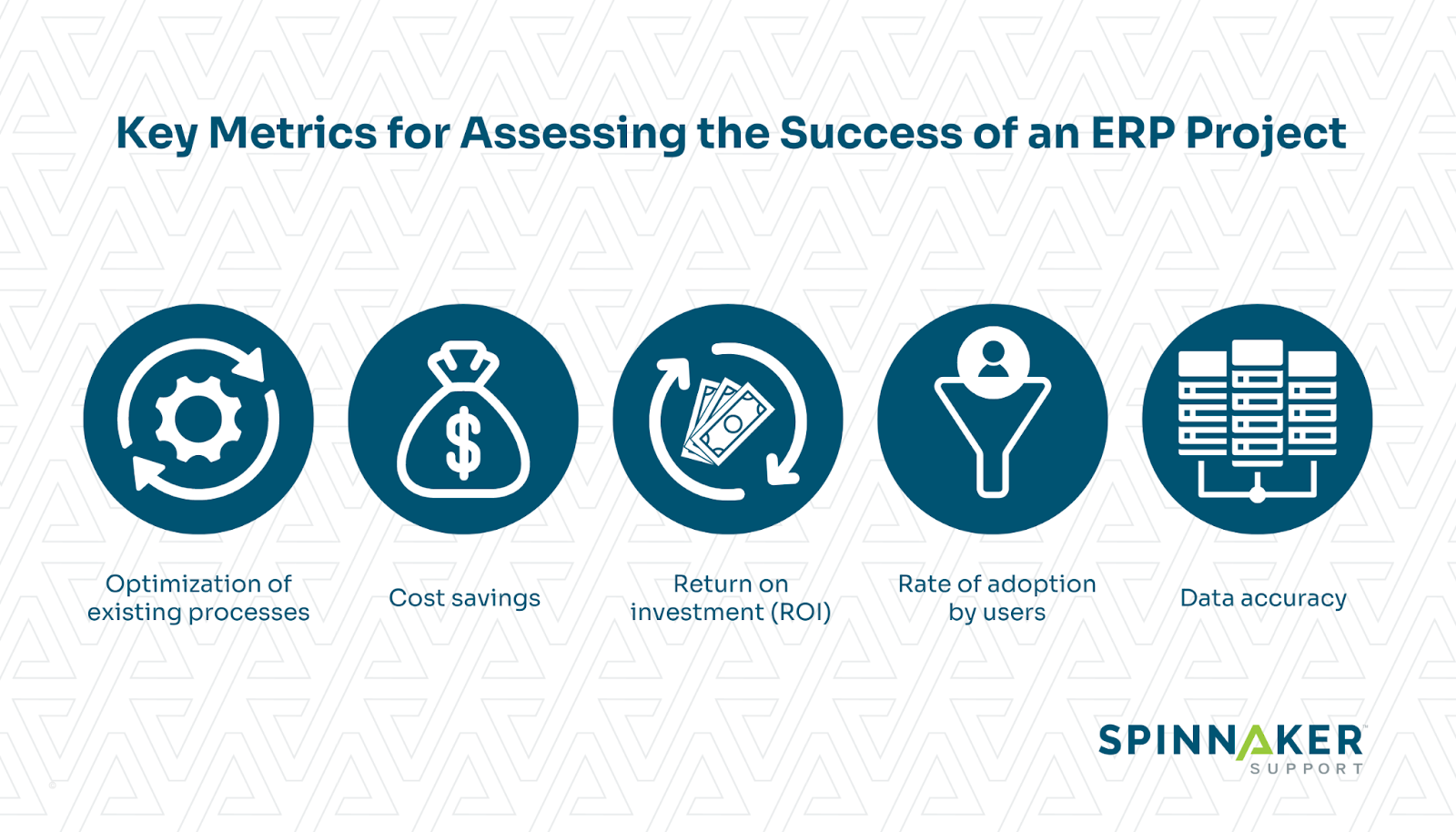
Optimization of existing processes
Overall, implementing an ERP solution should improve your existing processes and internal operations. In addition to boosting productivity by 66%, the automation of business processes can improve the quality of work for 90% of jobs held by knowledge workers.
Therefore, you should evaluate the ERP system’s impact on your company by monitoring its use in critical areas like financial reporting, inventory management, human resources management, and customer service.
Cost savings and return on investment (ROI)
A majority (69%) of private businesses have accelerated digital transformation due to the pandemic. More and more companies are looking to improve their bottom line by automating business processes and merging various business functions.
Ideally, implementing an ERP system should consolidate multiple departments within your company. By integrating various departments and processes, an ERP system orchestrates productivity and cost savings.
You should compare the cost savings generated by the system to the price of the ERP implementation and ongoing maintenance. You should also analyze the benefits generated by the implemented ERP system, including improved processes and data accuracy, to the costs of the system.
Rate of adoption by users
You can track adoption rates by counting the number of logins, transactions, and help desk tickets submitted. Low adoption rates may indicate a need for additional work in user training and change management. Moreover, you should listen to the user’s feedback and adjust the system accordingly.
Data accuracy
Poor data migration can lead to inconsistencies, stale information, and data silos, which could harm key business functions. You should maintain a log of how precise each ERP system entry is compared to pre-implementation manual entries.
Proper migration ensures that data inaccuracies won’t affect the new ERP system after the go-live date.
Top tips for successful ERP implementation
There’s no way around it: implementing a new ERP system will cost you both time and money. So it’s vital to choose the right approach to minimize the pain points.
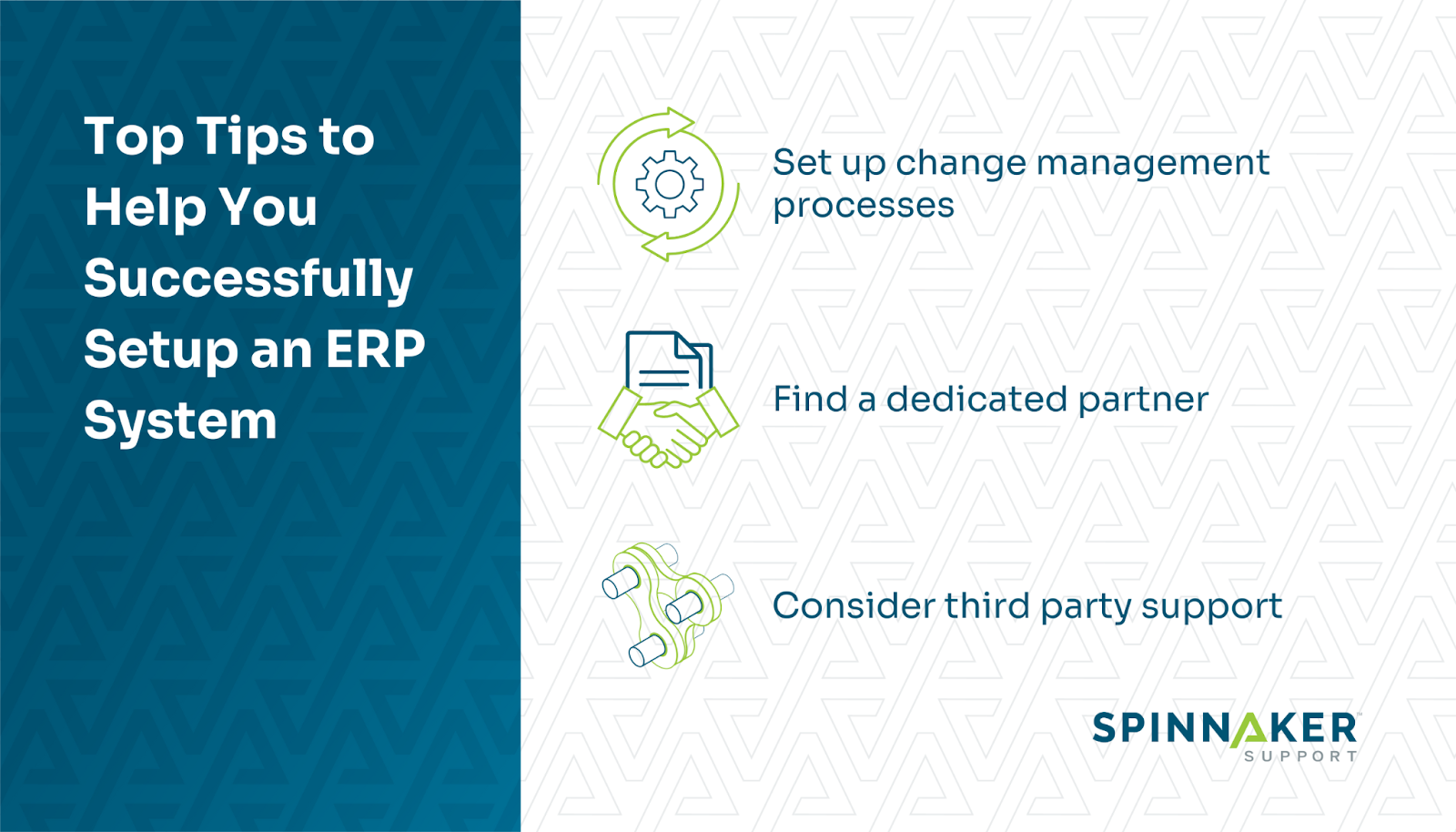
Here are the top tips to help you successfully implement an ERP system:
Set up change management processes
You need to set up change management processes to help users acclimate to the system. You should provide proper communication within your organization to get everyone on board. Additionally, address employee concerns via openness and training and resolve governance issues.
Find a dedicated partner
If your company lacks the internal IT resources, time, or expertise to successfully implement a new ERP software solution, you should consider working with a dedicated implementation partner.
Find a software partner with an in-depth understanding of your business rules and processes and who’s skilled at the successful implementation of business tools. A good partner is also transparent. Generally, 71% of professionals want technology partners to be more open about the total costs of ERP projects.
Finding a reliable implementation partner will help you define the implementation process, project scope, and costs. Further, make sure the software vendor or third-party partner you choose can meet your needs on a global scale.
Consider the alternatives
If you feel pressured to migrate to a newer version of your ERP system, shifting to third party support will allow you to migrate at your own pace. You can also choose not to migrate if you are happy with your current system and if it’s consistent with your long-term plans.
For instance, Exela didn’t plan to upgrade its ECC6 application. Through Spinnaker Support, they saved 60% on SAP annual fees. In hindsight, third party support can help you cut your maintenance costs and maneuver the challenges in enterprise resource planning.
On top of that, you’ll be able to extend the life of your existing software suite and use the cost savings now to fund new technology projects or plan your future ERP implementation on your own timeline.
Get help with your ERP implementation process
No two ERP implementations are alike, because no two businesses are alike. For a successful implementation, you need a software partner that understands your business rules, processes, culture, and organizational structure.
Third party support will also help you enhance your existing vendor support, cut maintenance costs, and extend the life of your existing software suite.
Whether you want to make a leap to a new ERP system or keep your current software suite, Spinnaker Support will walk with you every step of the way. Contact a Spinnaker IT business expert today to get started with third party software support.


